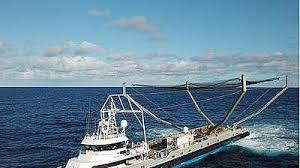
Breaking News
 Trump "Sick Of Meetings" About Ukraine War As Biden Goes Broke
Trump "Sick Of Meetings" About Ukraine War As Biden Goes Broke
 Andy Schoonover - Scam Is Over, The Old Health Care System Is Being Replaced With The New
Andy Schoonover - Scam Is Over, The Old Health Care System Is Being Replaced With The New
 Smart Glasses Are Coming for Your Face, With Wild Options for 2026
Smart Glasses Are Coming for Your Face, With Wild Options for 2026
 Why You Might Not Want to Wait Until Next Year to Buy Your Next Laptop
Why You Might Not Want to Wait Until Next Year to Buy Your Next Laptop
Top Tech News
 This tiny dev board is packed with features for ambitious makers
This tiny dev board is packed with features for ambitious makers
 Scientists Discover Gel to Regrow Tooth Enamel
Scientists Discover Gel to Regrow Tooth Enamel
 Vitamin C and Dandelion Root Killing Cancer Cells -- as Former CDC Director Calls for COVID-19...
Vitamin C and Dandelion Root Killing Cancer Cells -- as Former CDC Director Calls for COVID-19...
 Galactic Brain: US firm plans space-based data centers, power grid to challenge China
Galactic Brain: US firm plans space-based data centers, power grid to challenge China
 A microbial cleanup for glyphosate just earned a patent. Here's why that matters
A microbial cleanup for glyphosate just earned a patent. Here's why that matters
 Japan Breaks Internet Speed Record with 5 Million Times Faster Data Transfer
Japan Breaks Internet Speed Record with 5 Million Times Faster Data Transfer
 Advanced Propulsion Resources Part 1 of 2
Advanced Propulsion Resources Part 1 of 2
 PulsarFusion a forward-thinking UK aerospace company, is pushing the boundaries of space travel...
PulsarFusion a forward-thinking UK aerospace company, is pushing the boundaries of space travel...
 Dinky little laser box throws big-screen entertainment from inches away
Dinky little laser box throws big-screen entertainment from inches away
 'World's first' sodium-ion flashlight shines bright even at -40 ºF
'World's first' sodium-ion flashlight shines bright even at -40 ºF
SpaceX Almost Caught Part of a Rocket Using a Boat and a Giant Net

Early Thursday morning, a SpaceX Falcon 9 rocket lifted off from Vandenberg Air Force base carrying two telecommunication satellites to Low Earth Orbit. Those satellites are testing the viability of Starlink, Elon Musk's plan to cover every inch of the Earth with satellite broadband. It's the first step toward making this highly ambitious (and historically ill-fated) project a reality, but the launch was also remarkable for what happened after the satellites were deployed in orbit.
Off the California coast, a boat called 205-foot boat called Mr. Steven, owned by a company called SeaTran, attempted to catch the Falcon 9's fairing (the casing on the top of the rocket that holds its payload) as it fell back to Earth. According to a Tweet from Musk, the boat missed the fairing "by a few hundred meters."
"Fairing landed intact in the water," Musk tweeted. "Should be able to catch it with slightly bigger chutes to slow down descent."



